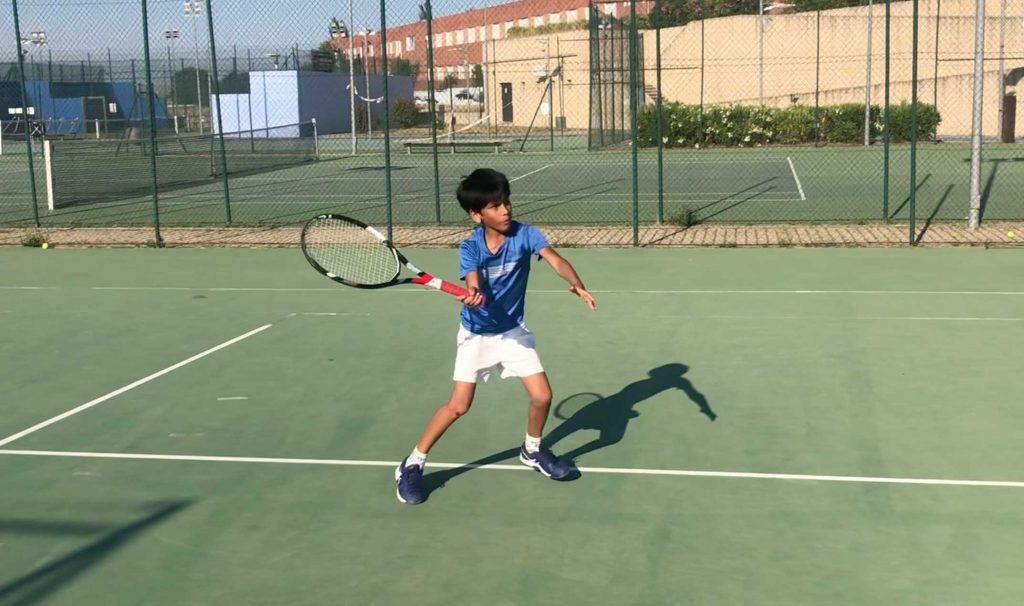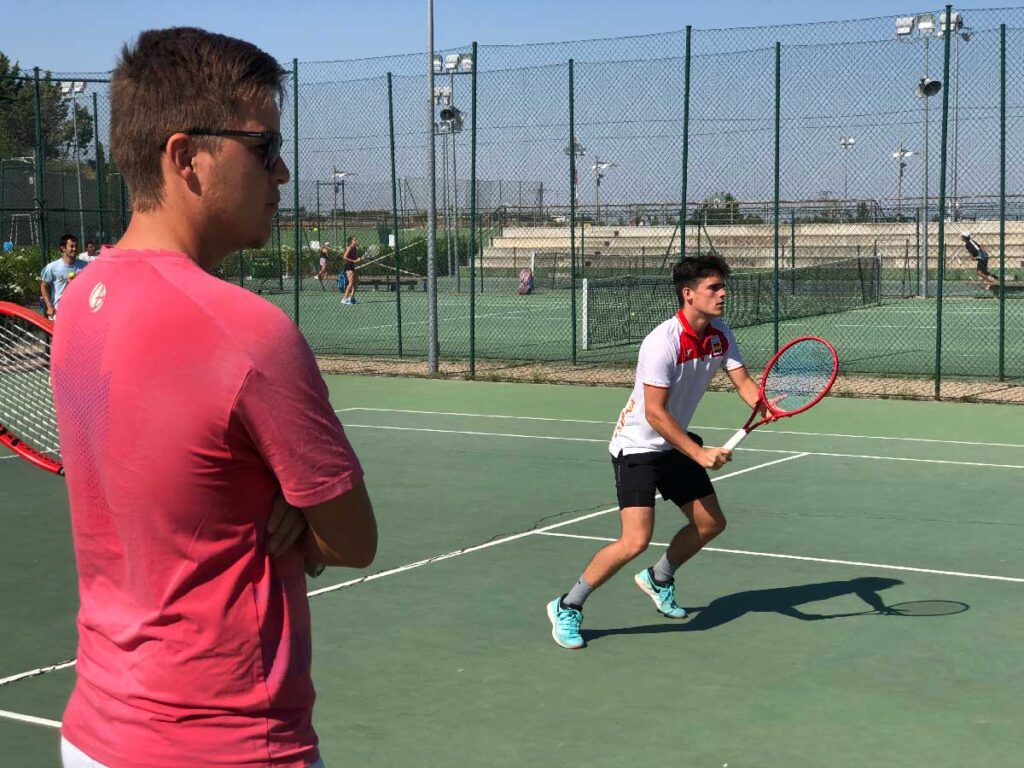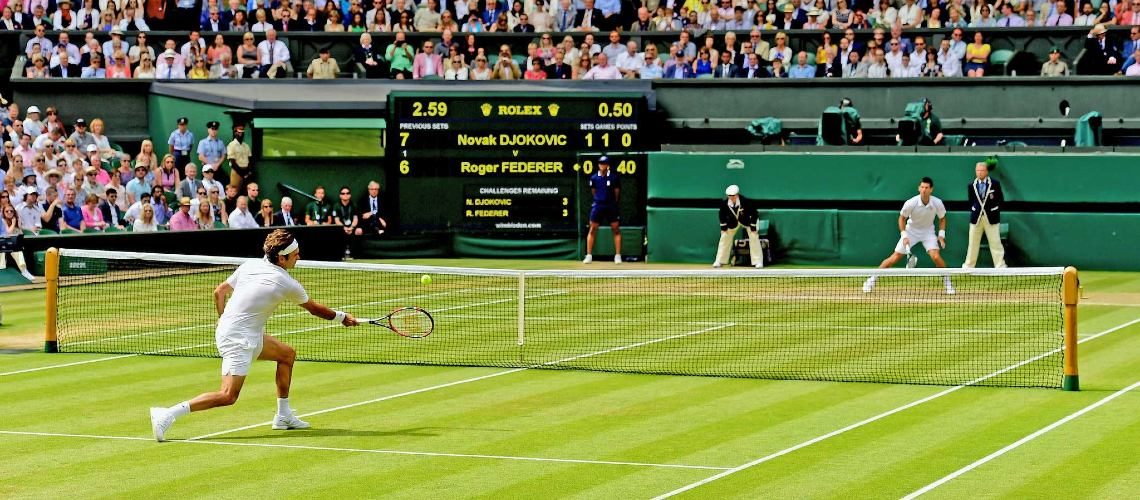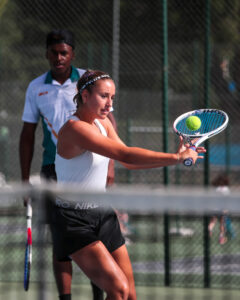In this second article on tips for volley we will see some more details about the game at the net. We will share tips for some circumstances and we will leave to finalize a video tutorial that will provide visual references. In the third article on this topic, we will complete the syllabus with the foot technique and some positioning suggestions. We hope the article helps you and we invite you to apply these tips on the court.
To generate power: first step, then arm
Before moving on to how to generate more power in the slow balls, let’s first define one of the most important concepts to volley: before applying the force of the upper body (arm), try to gain as much power as possible from falling body weight (step).
Use the weight of the body to move the ball: the step itself would not make sense without that fall (entrance) of the body. Get the most of its power before thinking about opening (widening) the swing to hit the ball harder. Remember that the gesture should be as compact as possible. If you use your body weight correctly, you will seldom have to expand your swing so much as to lose control.

Build more force by expanding the swing
We’ve talked before about how to compact your preparation so you can maintain control at high speeds on the volley; We have also explained why the elbow must be kept in front of the body, that the free hand must be close to the hand in action, how to leave the non-dominant hand still on the backhand, etc. Now we are going to focus on the balls hanging in the air, those slow balls that force us to generate more power.
In this case, in addition to using the weight of our body, we must expand the swing and base the movement on the shoulder instead of the elbow. We will always bear in mind that in the volley we need control and, therefore, compact gestures. On the forehand, widening the gesture, the arms are spread a little more; and backhand, we use the technique of the one-handed groundstroke to print strength in the shot (we separate our arms when hitting the ball).
If the balls go out
There is a quick trick if you find that your shots go long and you can’t control them. Look at the swing: cut it down! Shorter the swing will and it will give you more control over the ball and thus will prevent it from going out. Therefore, whenever you see that your volley is going long: shorten the swing.

The surface of the racket
Another aspect that we must mention is the surface of the racket: at high speeds, the surface of the racket can move (dance) in contact with the ball, especially if you have not hit the sweet spot. To avoid this, try to open (lie down) the surface of the racket. You will be able to play flat with the open surface if you enter the ball horizontally and also can keep the power high. Remember that the ball is softened by moving the surface of the racket on the stroke (changing it). So don’t be afraid to open the racket and look for a power shot.
A trick to be able to feel this gesture is to think with the lower part (of the frame) of the racket: imagine that you want to bring the lower part forward; do not close or change the surface. If you maintain this, the ball will be adding good power. In case you want to make drops shots or play with touch, then you can “smear” the racket and handle it with your wrist.
The grip on the volley
The grip at the volley has a special relevance: you must have the same grip both for your forehand and your backhand, since there is no time to change it while volleying; and if you manage to have the same as in the serve and in the overhead, this will facilitate many things. We are not going to go into details about the grip, but it is important to mention that it must be adapted to the correct position of the wrist (especially on the backhand). Be aware that there are certain wrist movements that can be detrimental (harmful) if you repeatedly perform them.
For more information on this topic, watch the video tutorial below.
Arm towards the ball
And finally, one of my favorite tricks to understand the volley swing: unlike on the baseline, where we carry the racket back to prepare, in the volley we look for the ball forward, throwing the racket to meet it. It is as if you were trying to catch the ball in flight, reaching out to meet it. With this you will get a lot of control and mastery of the ball at high rhythms and it will also be easier for you to cross cutting diagonally the angles.
You can watch the video tutorial below to better follow these tips and be more effective online. (Only in Spanish for now).
In the next article (and video tutorial) we will talk about the foot technique.
To finish, I leave you some related articles: “Tips for volleying 1”, “Your Center of the Court” and “Basic Rules of an Approach”.










